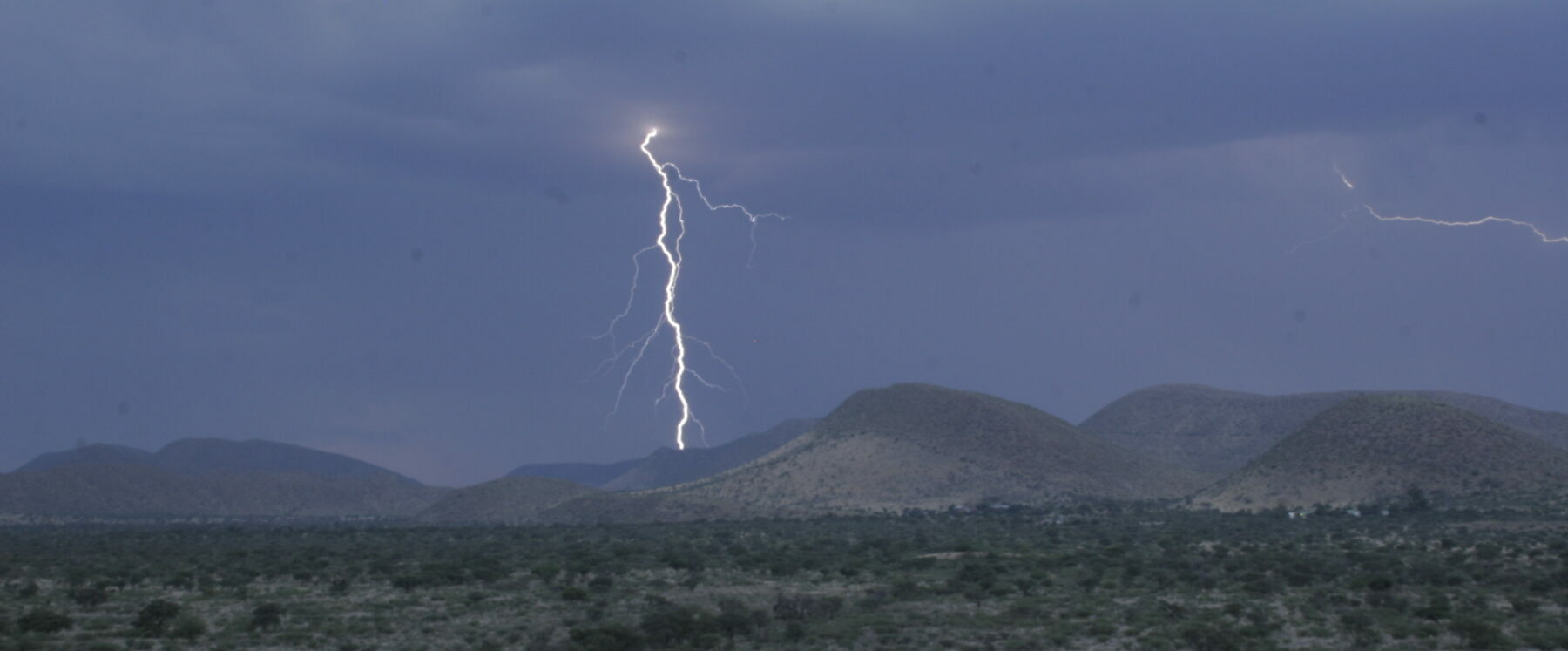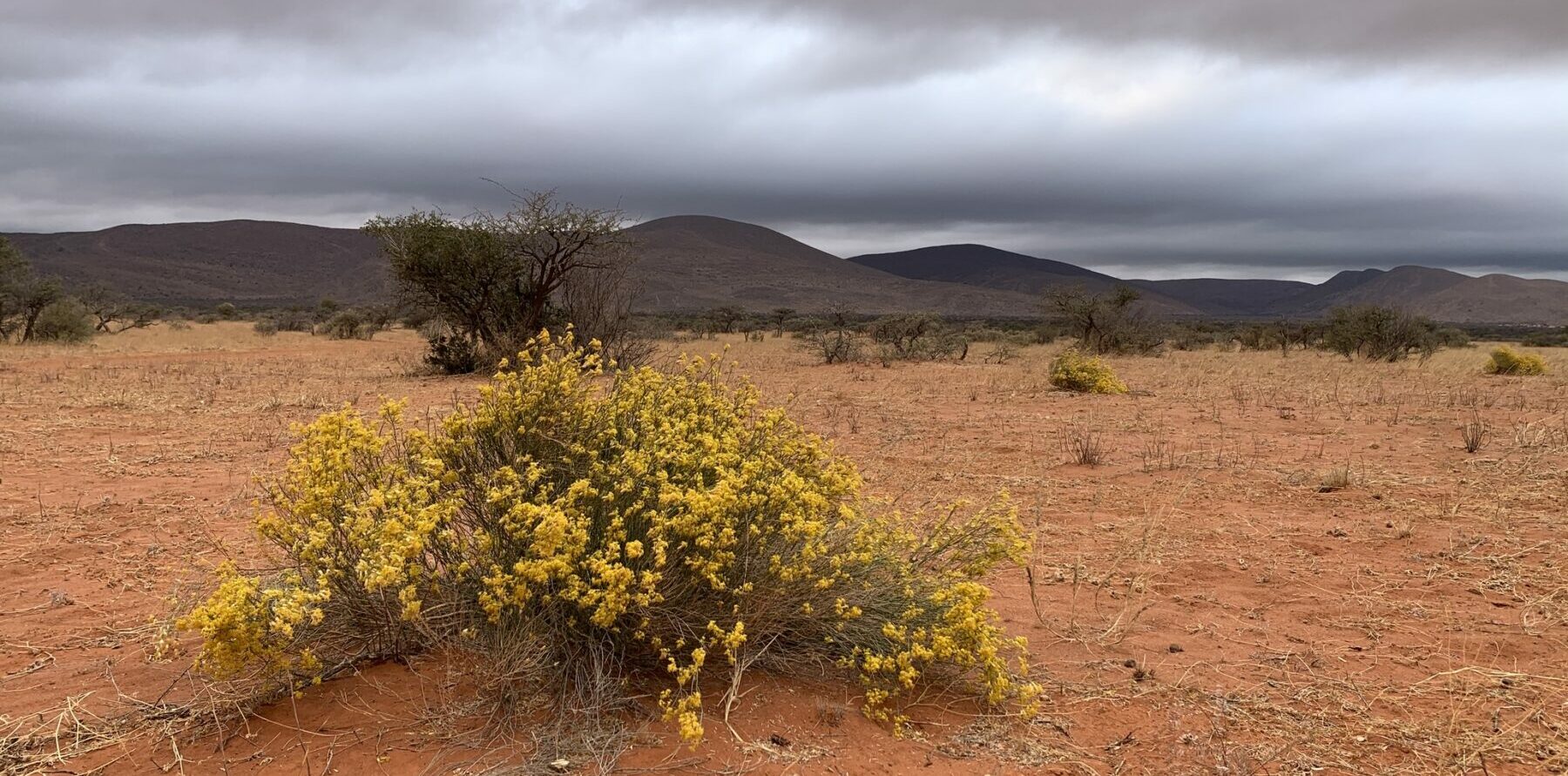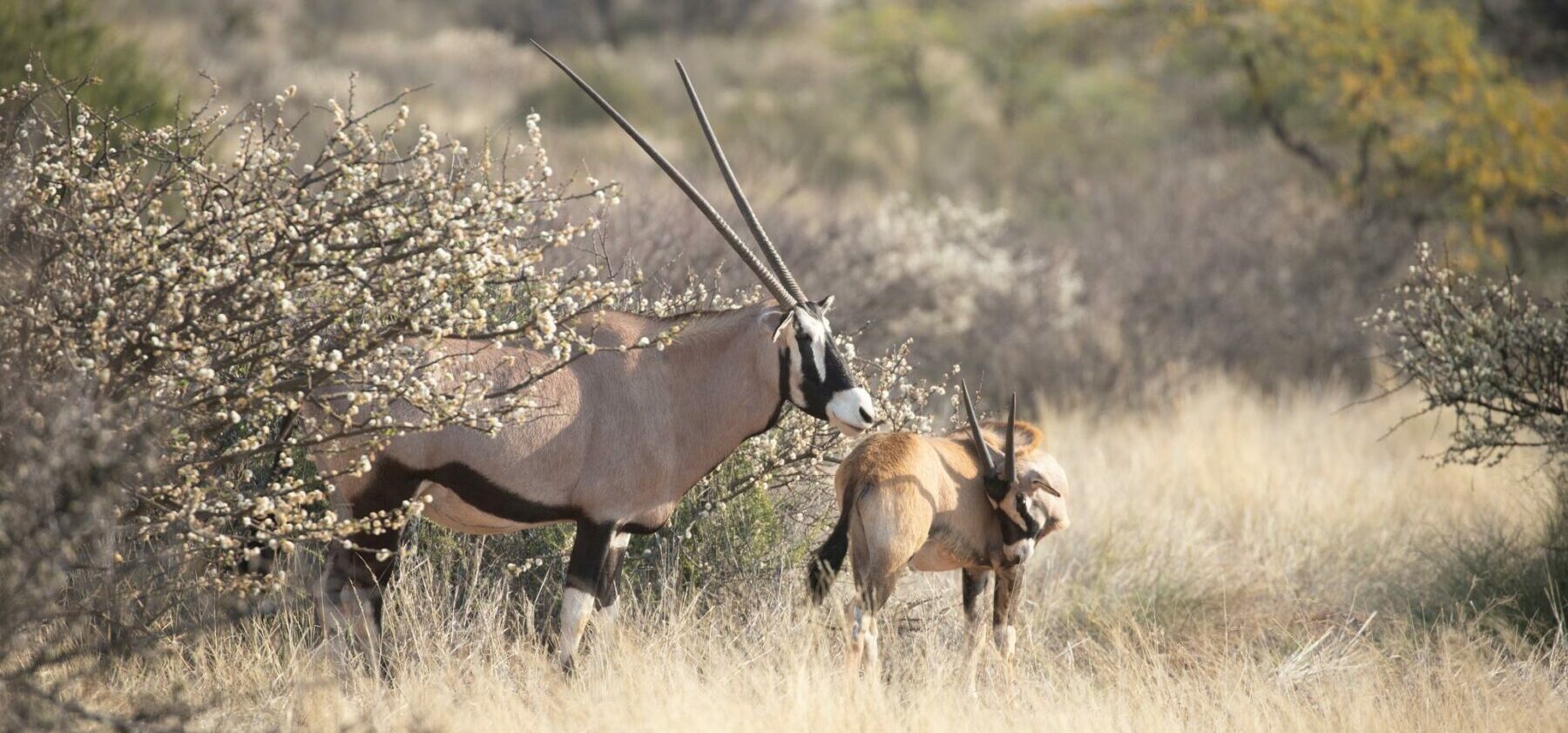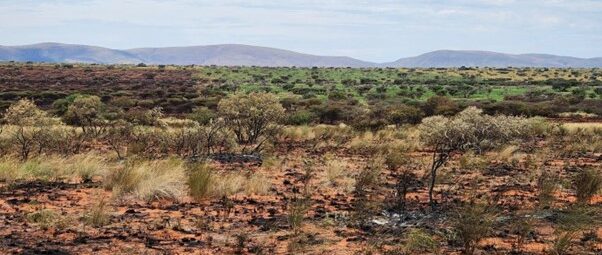Summer rains and wildfires in the Kalahari
Summer in the Kalahari epitomises life. The first summer rains come after a long, excruciatingly dry winter and spring. The ground has a quenchless thirst, and the grasses are dry and brittle, as if holding onto their last breath. The trees of the Kalahari are more resilient, being non-deciduous or evergreen. Three iconic tree species, namely the camel thorn, shepherd’s tree, and grey camel thorn, are key in sustaining Kalahari wildlife throughout the year. In summer, the shepherd’s tree bears fruit, while in winter seed pods from the camel thorn and grey camel thorn provide a high source of protein for animals struggling with nutrient deficiency.

When lightning strikes in the Kalahari
Dry thunderstorms are a norm in the Kalahari during summer. The remaining grass is rich in fuel, susceptible to any spark, and ready to be ignited at a single lightning strike. Lightning strikes were the primary cause of a few wildfires this season, as there was a build-up of burning material from the previous two rainy seasons. This is in stark contrast to four years ago when the veld was reduced to red sand due to a drought cycle.

Summer 2022/3 was a season of ignition as nature dictated. While animals, such as tortoises, appreciated the rain, they did not appreciate the fire as they cannot outrun it. Ground-nesting birds were some of the affected species as they cannot move their eggs when fire sweeps through an area. Antelopes benefited from wildfires, as burning rejuvenated the fields with new growth of grass shoots and forbs, creating nutritious feeding spots.

Expectations of summer rain at Tswalu
Wildebeest, hartebeest, duiker and oryx could be seen around these recovering burnt areas, trying to extract as much as they could from the new shoots. The veld was rewarded in late November, when rain transformed Tswalu into the Green Kalahari and radiated life for wildlife species. The rain encouraged calving, and we saw lions, springbok, impala, wildebeest and oryx introducing young ones and raising them in a food-abundant environment. The humidity increased in the air by day, and the skies threatened daily afternoon downpours as dark rain clouds assembled over the Korannaberg mountains.

On game drives, it became more challenging to track animals as the ground was blanketed by forbs from the Indigofera species, gemsbok cucumber and tsamma melons. The long, knee-height grass tufts made visibility and detection of small-bodied rare mammals tricky. This environment called for heightened senses in the field and proper coordination and communication between the guides and trackers.
Some parts of the reserve were covered in dubbeltjie (little devil) flowers (Tribulus zeyheri subsp. zeyheri), creating a startling colour contrast between the yellow flowers, red sand, green grass, and blue skies. These yellow flowers are a source of life, as ground squirrels feed on them.

All in all, it was a good season for most animals. Insect life was not as prolific as it was in the past two seasons. During above-average rainfall seasons, the Kalahari tends to explode with moths, armoured ground crickets, blister beetles and stink bugs!
Tswalu had equal distribution of rainfall this summer and it was consistent in its frequency. At the time of writing (March), the environment looked good despite not yet topping our annual average of between 320-350mm of rain. This emphasised the value of equal distribution and frequency of rainfall for vegetation growth, versus random and infrequent downpours.

IMAGE SHOWING:
(TO THE LEFT) A RECENT BURNT AREA
(MIDDLE) A RECOVERING BURNT AREA
(FAR RIGHT) AND AN UNBURNT AREA
Both the wildlife and the field showed good recovery, thanks to the summer rain. It was wonderful to witness the annual rejuvenation of Tswalu. As always, our guiding team had to adapt to the seasonal changes to deliver the best experiences and wildlife sightings for our guests.
All images by Prince Ngomane and Barry Peiser.

